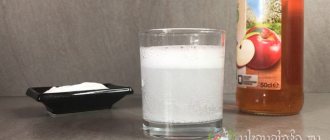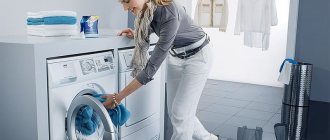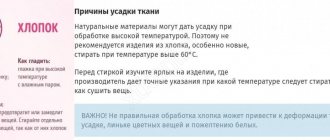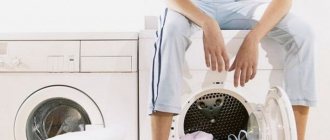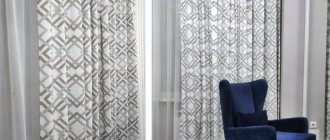How to wash tulle without ironing: Pixabay How to wash tulle to prevent unsightly wrinkles from forming on delicate fabric? Voluminous and light curtains are difficult to iron, and housewives try in every possible way to avoid this procedure. If you need to remove stains and refresh tulle without further ironing, use the advice of experienced housekeepers.
Wash
After soaking, you can start washing. Many housewives mistakenly believe that the higher the temperature in the washing machine, the cleaner the curtains will be.
This is far from true. To effectively clean curtains, set the temperature to no more than +40 °C.
Place curtains in the washing machine tub only when folded. This is very important, because if you crumple the fabric, it will be very difficult to smooth it out.
To get perfectly clean curtains, add a small amount of baking powder to the washing powder.
Each has a separate “room”: an unusual bunk bed for boys
The bulbs will be juicy and large: how to choose the right onion set
Visitors to Russian cinemas will be prohibited from bringing in their own food and drinks.
After finishing the wash, set the spin speed to the lowest setting.
How to wash tulle by hand without ironing
Light curtains on the windows create coziness in the house and complement the interior. Weightless tulle lets in sunlight and fresh air, protects the room from insects and dust. The proximity to the window and the porous texture of the fabric provoke dust and dirt to settle on the tulle, so the curtains must be washed regularly.
Many housewives have a question about how to wash tulle in order to avoid the tedious ironing process. In addition to the expenditure of effort and energy, during ironing you can damage thin fabric: high temperatures have a negative effect on the material, and careless movement or improper handling with a hot iron will lead to the appearance of burnt areas.
How to properly wash tulle by hand? The step-by-step instructions are as follows:
- Remove the curtains from the curtain rod and dust off (do this outside). This manipulation will get rid of most of the dust that has settled on the thin fabric due to the electrostatic effect.
- Prepare a large basin into which the tulle will fit completely.
- If additional processing of the tulle is required, then soak it in water with bleaching agents. To do this, dilute 3 tbsp in 5 liters of warm water. l. salt, baking soda or citric acid. Leave the curtains in the solution for about half an hour.
- Fill the container 2/3 full with clean warm water (no more than 40 °C). Add laundry detergent or liquid detergent for delicate items. To enhance the effect, drop a little stain remover into the water. Stir thoroughly until thick foam appears.
- Dip the tulle into the soap solution. Leave for 2-3 hours. Rotate the fabric from time to time, squeezing it slightly. Do not rub or squeeze the material too hard.
- Remove the tulle from the soapy water and rinse in water with vinegar (for 5 liters of water, use 50 ml of 9% table vinegar). Change the water until it becomes clear after rinsing the curtain. You can add blue or brilliant green to the last rinsing water. This will ensure the material is snow-white.
- Without wringing out the fabric, hang the tulle over a bathtub or bowl where excess water will drain.
Hand wash tulle in soapy water: YouTube/U Tatyana
Carry out further drying in a well-ventilated area away from heating appliances. You can hang the tulle on the curtain rod, where it will straighten out under its own weight.
Don't know how to wash nylon tulle or curtains made of other thin synthetic material? Nylon and similar tulle accessories tolerate hand and machine washing well. The main thing is to choose the right temperature regime and minimize the mechanical impact on the fabric.
When washing by hand, nylon is soaked in soapy water and left for 2–3 hours. Afterwards, rinse and, without twisting, hang, avoiding creases in the fabric.
Fabric types
The material for tulle, which is on sale today and is used for window decoration, is divided into types:
- organza;
- veil;
- grid.
Organza is a transparent elastic material with a pronounced shine. It can be made of silk, nylon, or polyester of the highest quality.
Mesh or curtain combined tulle is a decoration made from light drapery fabrics. It is made from a mixture of synthetics and polyester.
The veil is a translucent soft material, the threads of which are denser than organza. They transmit less light, are not more dense and require light drapery.
The curtain is made of cotton fiber or viscose. It is durable, but needs to be washed more thoroughly.
Production
Modern production of blackout fabric can be carried out using two technologies.
- In the first case, a thin white fabric is applied to a dense textile base; it is also called “spraying”. This is the thinnest layer, but it is the one that serves as protection from the sun’s rays, that is, it is a light reflector. On the other hand, the canvas is decorated with a decorative layer of fabric, which performs an aesthetic function. It can be a smooth plain fabric with a matte structure or with shimmer. Blackout can also be decorated with ornaments, drawings, and hems. The advantages of textiles created in this way are that they are dense and beautiful; this technology allows you to create fabrics of bright colors . The disadvantage of this manufacturing method is the fragility of the spraying, it is easily damaged (scratched and torn), and can peel off.
- The second technology is the creation of material using weaving techniques: the fabric is made by weaving three threads of different structure. Colored fibers come from the front and back of the fabric, and the inner layer is formed from black and dense threads, which retain light. The advantages of the material made using this method: dense and, at the same time, soft and smooth surface. The disadvantage of such textiles is that they cannot have bright colors - the presence of black thread in the structure of the fabric contributes to the formation of grayish and muted shades. On a blackout of a dark color this is not noticeable, but for a fabric where the top and bottom layers are light, this nuance catches the eye.
Calico
Calico is thick cotton. This fabric is mainly used for making bed linen. Products made from calico have many advantages: environmental friendliness, hygiene, color fastness, wrinkle resistance, wear resistance, antistatic. In addition, this material allows the skin to breathe and does not cause allergic reactions.
Care
Calico is an easily washable material. Washable at 65 degrees, inside out. It is better to do without a strong spin, because after this the calico is difficult to smooth out. If the product has a colored pattern, then the temperature should be reduced to 40 degrees so as not to compromise the quality of the fabric. You need to iron wet calico.
- Author: Tamara Kolomoets
Rate this article:
- 5
- 4
- 3
- 2
- 1
(2 votes, average: 5 out of 5)
Share with your friends!
Not according to plan: 9 indispensable products if things become stained during washing
4 life hacks that will make you iron things much less often
When to turn to specialists for dry cleaning of hanging curtains
There are several options when it is better not to do the cleaning yourself. You should contact the company in the following situations:
- If the fabric of curtains or drapes is based on natural materials or tapestry, cleaning it yourself may damage the fabric.
- If you don't know what the curtains are made of, cleaning may do more damage than restore the curtains to their original appearance.
- When there are decorative elements on the curtains.
Experts will save time: cleaning it yourself will require removing curtains, washing, ironing and a lot of energy resources. Thanks to special equipment, cleaners will be able to clean hanging curtains in a short time.
Which company should you trust to clean your home?
A cleaning service will help you carry out high-quality dry cleaning of curtains at home in Moscow and St. Petersburg. For more than 10 years, the organization’s employees have been coping with not only cleaning curtains and returning the interior to its former appearance, but also updating carpets, furniture and much more.
Cleaning experts will remove stains using products that are harmless to people and animals. Equipment from European manufacturers helps remove dirt not only from furniture upholstery, but also mattresses, parquet and other types of surfaces. The company offers services at a wide range of tariffs without loss of quality; the current cost should be checked on the website.
Ironing curtains
Most types of fabric straighten out on their own when dry, but there are materials that must be ironed. These include:
- Synthetic tulle. It is ironed wet from the wrong side and through a cotton diaper. The temperature should be 120 °C.
- Organza. The completely dried material is ironed through silk paper. Hanging tulle cannot be treated with steam. This will cause waves to form.
- Cotton. The curtain is ironed using a damp gauze cloth at the minimum temperature setting.
With proper care, thin tulle will retain its original appearance and will delight you for a long time with its bright colors and pleasant texture.
Originally posted 2018-04-18 09:15:44.
Drying rules
As noted, tulle should not be wrung out during the washing process. Therefore, drying begins by first hanging the material over the bathtub. Under the influence of the gravity of the water, the fabric flattens itself. After the water has drained, the curtains are hung on the cornice. It is recommended to dry the material in a ventilated area away from direct sunlight. The use of artificial heat sources (radiators, hair dryers, etc.) is prohibited.
Due to the fact that tulle does not tolerate high temperatures, it is not recommended to iron the material after washing. To straighten the fabric, just soak the curtains in a basin or machine wash them using a special bag.
Is it possible to use an automatic machine?
Washing curtains is required regularly to keep the room clean. You don't have to do this manually. If possible, it is better to use an automatic machine. It’s easier and faster, and the procedure itself will be performed with better quality. However, even in this case, difficulties may arise if certain rules are neglected. The features of washing curtains in a machine will mainly depend on what material is in front of you.
If you have a set of curtains and tulle, then when caring for such curtains you should take into account their different densities, and often colors. Therefore, it is not worth loading these curtains into the machine drum together, and also washing them in the same mode.
Some curtains have hooks attached to secure them in place. They can be made from different materials, not all of which can be machine washed. Curtains with hooks cannot be loaded into the drum:
- made of metal-plastic;
- made of metal;
- with chrome plated.
These elements securely fix the fabric, but during automatic processing they corrode or damage the fabric of the product.
All types of products can be washed: roller blinds, Roman blinds, thread blinds, blackout (sun-protective) curtains. Each type requires proper individual care. Recommendations are often listed on the label. If the manufacturer has not done this, you can use general advice for a specific type of curtain.
Application and care
Blackout fabric is used mainly for interior decoration, namely:
- curtains of various types (classic, roller, lambrequins, scalloped, Japanese panels);
- curtains for theater stages, photo studios;
- in decorating walls (instead of wallpaper);
- in various types of creativity: scrapbooking, textile applique, patchwork.
Polyamide
Polyamide includes such materials as the usual nylon and nylon, as well as microfiber, Meryl and Tactel, developed according to high technology standards. Thanks to innovation, these durable, resistant and wrinkle-resistant fabrics have become hygroscopic - the property of absorbing moisture from the air. They are not afraid of fungal infections, which protects clothes from rotting.
Care
It doesn't require much effort. When washing polyamide at 30 degrees, special products for silk and wool are added.
If you need to iron synthetics, set the “synthetics” mode on the iron.


